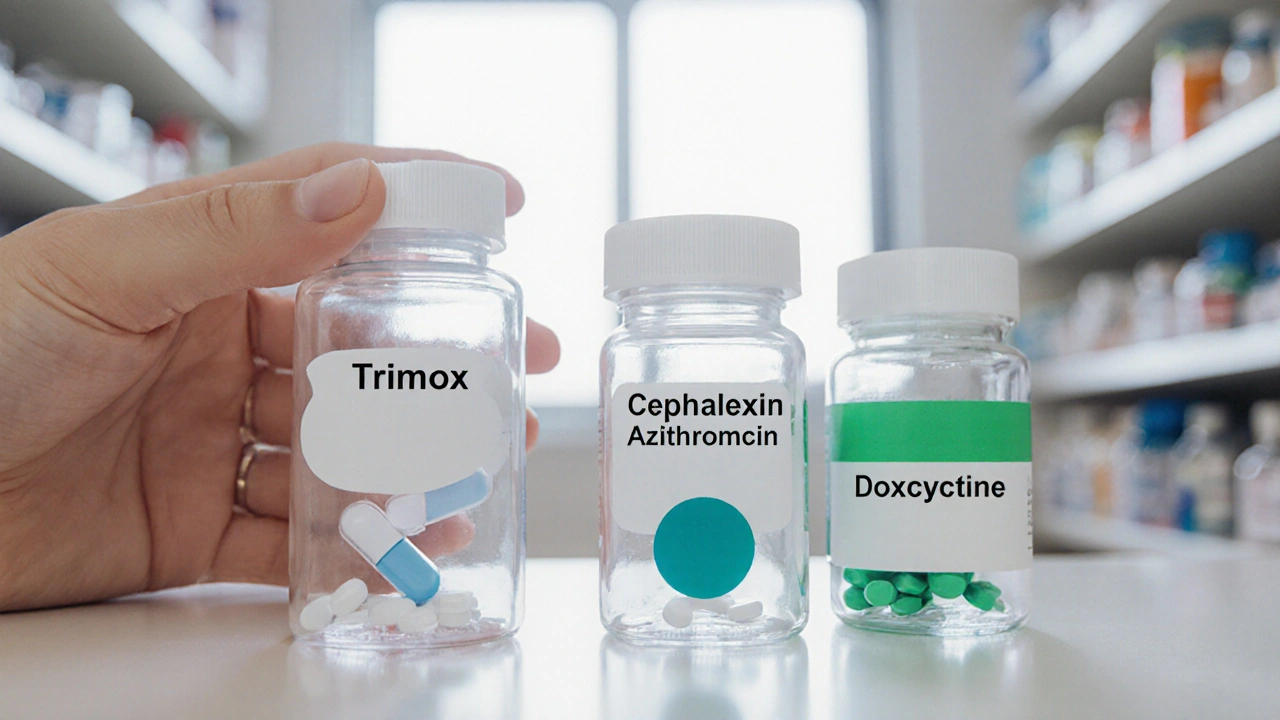Amoxicillin: What It Is, How It Works, and What You Need to Know
When you have a bacterial infection—like a bad ear infection, strep throat, or pneumonia—your doctor might reach for Amoxicillin, a broad-spectrum antibiotic in the penicillin family that kills or stops the growth of bacteria. Also known as amoxicillin trihydrate, it’s one of the most prescribed antibiotics in the world because it works well, is usually well-tolerated, and comes in easy-to-take forms like capsules, chewables, and liquid. Unlike viruses, which cause colds and flu, bacteria are living organisms that can multiply fast and spread. Amoxicillin targets those bacteria by breaking down their cell walls, making them collapse. It doesn’t touch viruses, which is why it won’t help if you have the flu.
Amoxicillin is often used for bacterial infections, common conditions like sinusitis, urinary tract infections, and skin infections. It’s also part of combo treatments for stomach ulcers caused by H. pylori bacteria. You’ll find it paired with other drugs like clarithromycin or proton pump inhibitors in those cases. It’s not just for adults—kids get it too, often in sweet liquid form, because it’s safe and effective for children when dosed correctly. But it’s not a one-size-fits-all solution. If you’ve had an allergic reaction to penicillin before, you might react to Amoxicillin too. That’s why your doctor asks about your allergy history before prescribing it.
Side effects are usually mild—nausea, diarrhea, or a rash—but they can happen. Some people get a yeast infection after taking it, because the antibiotic wipes out good bacteria along with the bad. That’s why probiotics are often recommended during or after a course. And if your symptoms don’t improve after a few days, or get worse, it could mean the infection isn’t bacterial—or the bacteria are resistant. That’s why you should never save leftover Amoxicillin for next time, or take someone else’s prescription. Misuse leads to superbugs.
What you’ll find in the articles below isn’t just a list of random posts. It’s a practical collection of real-world guides about how antibiotics like Amoxicillin fit into larger treatment plans. You’ll see comparisons with other drugs, like Cipro or Bactrim, and how they stack up. You’ll learn when antibiotics are necessary—and when they’re not. You’ll even find posts about how diet, probiotics, and natural remedies interact with these meds. This isn’t theory. It’s what real patients and providers are dealing with every day.

Trimox vs Alternative Antibiotics: Detailed Comparison
A clear, side‑by‑side look at Trimox (amoxicillin) versus common antibiotic alternatives, covering uses, dosing, side effects, cost and when to choose each option.
Detail




